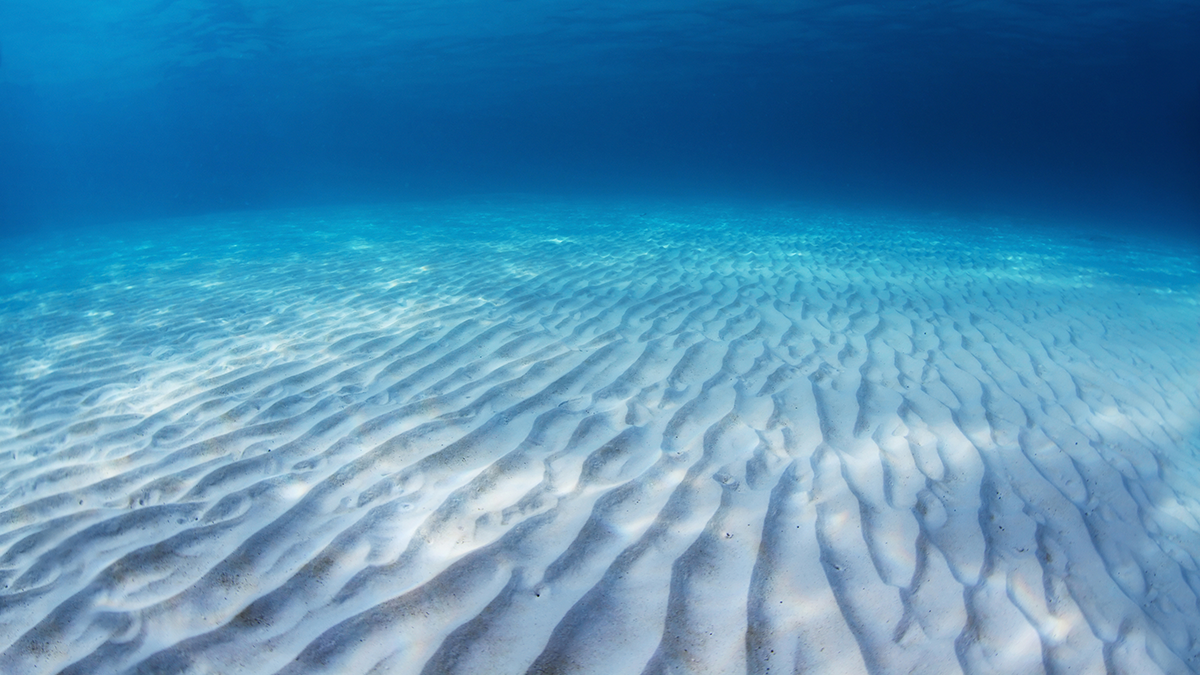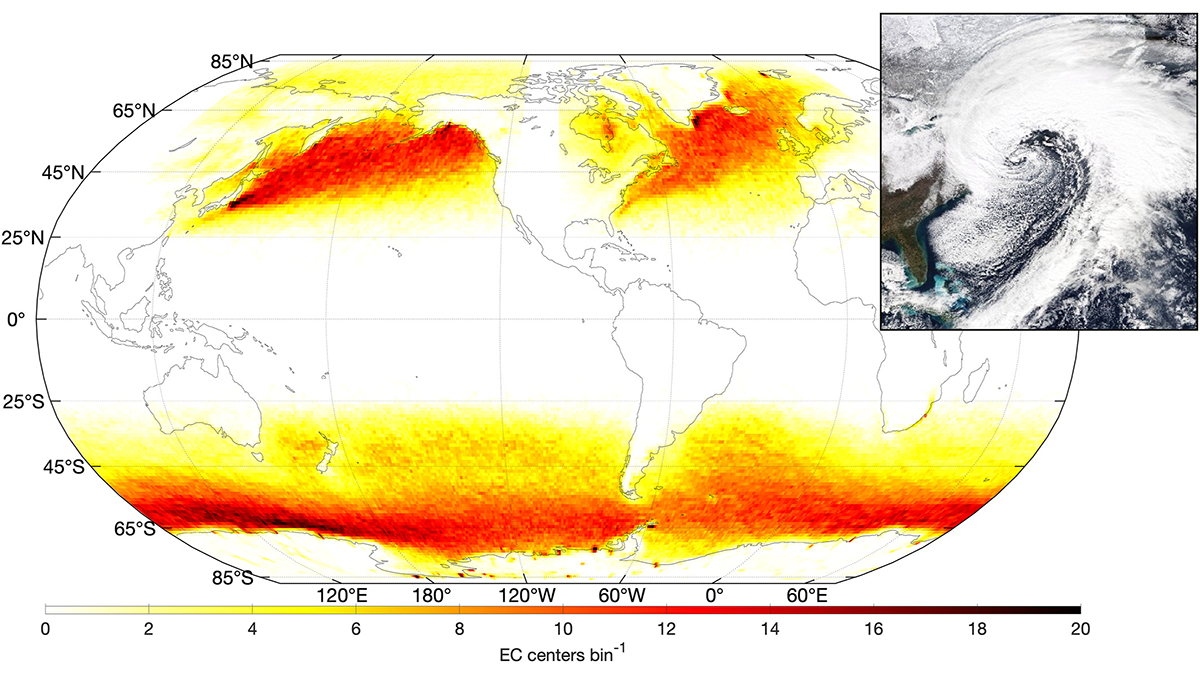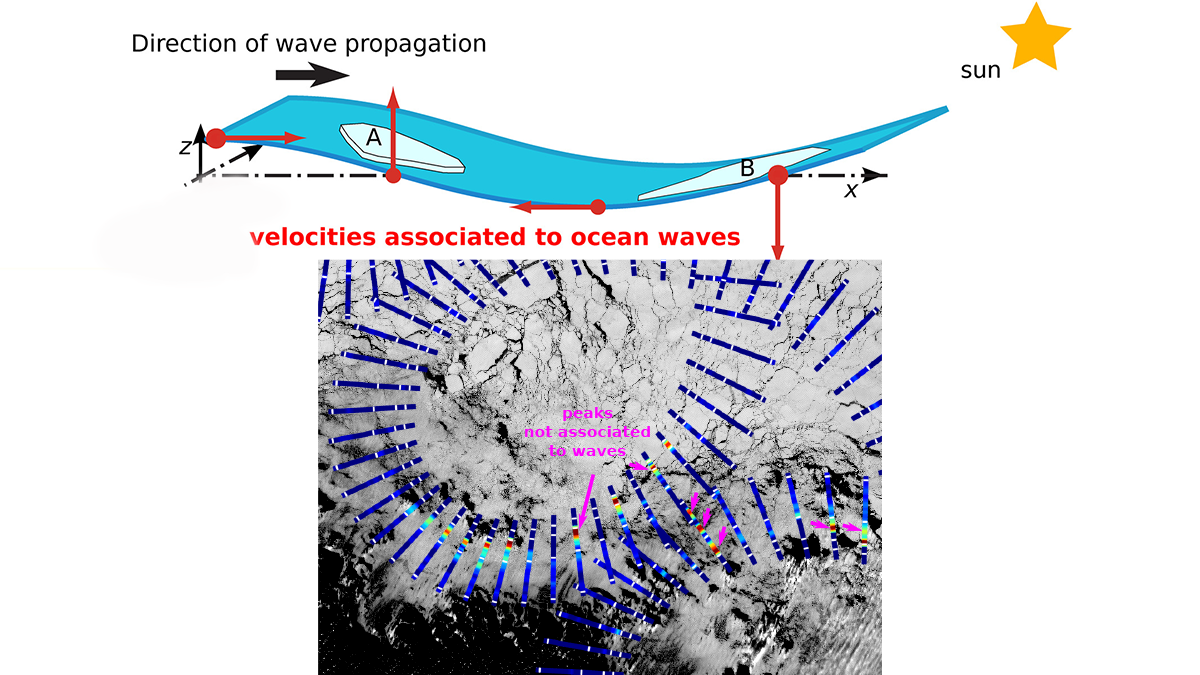A detailed numerical model shows how sediment particles experience wave-driven shear stress inside and above a sea bed with sand ripples.
Ryan P. Mulligan
Editor, JGR: Oceans
Dual Tsunami Generation from Atmospheric and Oceanic Sources
The 2022 Tonga volcanic eruption generated waves that propagated across the Pacific Ocean. A new analysis of sea level measurements is used to dissect the difference in wave components from two sources.
Tracking Ocean Waves from Extratropical Cyclones on Global Scale
A new way of tracking ocean waves with satellite measurements was developed and applied to extratropical cyclones, revealing the effects of storm characteristics on extreme sea states.
Satellites Remotely Measure Ocean Waves and Sea Ice Interactions
A new method for using satellite observations from multiple sensors improves measurements of ocean waves as they propagate through and interact with sea ice.
Unravelling Sands and Muds Suspended in Coastal Environments
A new study uses the response of optical and acoustic measurements to derive a sediment composition index for prediction of the relative fractions of mixed sediments in suspension.





